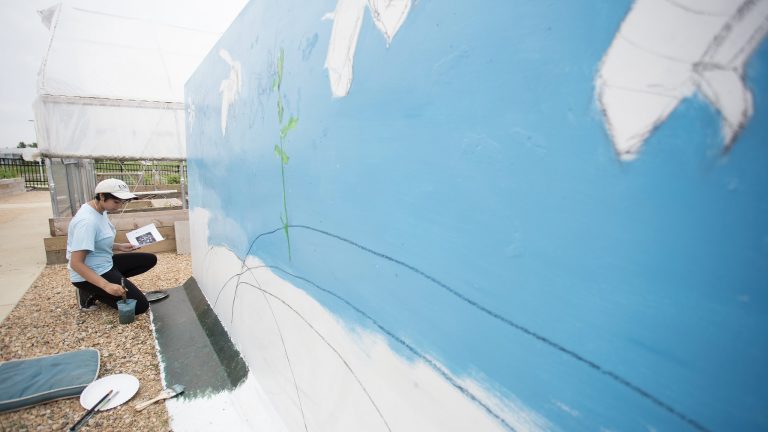Every few years, the U.S. government releases the National Climate Assessment, a comprehensive report on the impacts of climate change in the United States.
Lustig: “Art has the ability to appeal to people’s emotions in a way that a 2,000-page scientific document cannot.”
Allyza Lustig is a senior staff manager and landscape artist at the U.S. Global Change Research Program. She helped curate the gallery's 92 works of art.
They include paintings, drawings, collages, and even beadwork, and address a range of issues.
For example, one set of photos shows the charred branches of oak trees after wildfires. One painting depicts a young woman painting trees and clean water in front of polluting chimneys. The fabric wall hanging uses different colored ropes to illustrate the disproportionate amount of carbon emitted by the world's most polluting countries.
Lustig: “Art is its own way of knowing. It is its own way of recording, understanding, interpreting, observing, imagining, creating, etc.
So Lustig says combining art and science could lead to a deeper understanding of climate change.
Report source: ChavoBart Digital Media
We help millions of people understand climate change and what to do about it. Help us reach more people like you.
